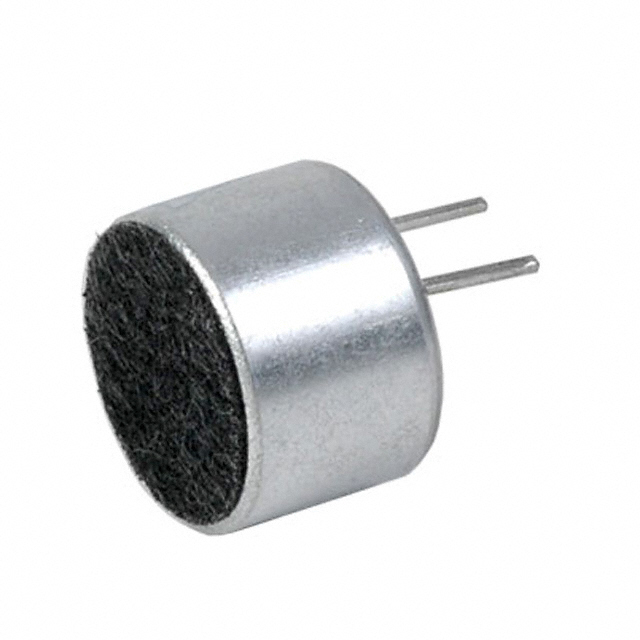
I'm building a tiny monster box for Halloween, and I want it to trigger when there is a sound, such as saying "Hello" to the box.
To do this, you need a microphone:
 |
To get a signal out of such a microphone, all you need is a resistor. Connect the resistor from the microphone to your plus terminal, and the ground microphone terminal to minus:
That's all you need to get a signal from your microphone.
But this signal is very weak. When I tried this yesterday, I got about 150 mV out when I made a loud clap in from of the microphone.
You might be able to hook that signal up to the analog input of an Arduino and be able to detect loud sounds if you study the signal and set the proper threshold values.
But it's common to amplify the signal first so that you get a higher volt signal out that is easier to work with. You can do that with a capacitor, two resistors, and a transistor:
If you want to build circuits with microphones, it's good to know the specs of your microphone so that you know what voltage to use. And using an oscilloscope is super helpful to check that you're actually getting a signal out from the mic.
If you're an Ohmify member, you already have access to our course Learn To Use an Oscilloscope.
Keep On Soldering!
Oyvind @ build-electronic-circuits.com
PS! Whenever you're ready, here are two ways I can help you learn electronics:
- Become an Ohmify member: Ohmify is for electronics-interested people who want to learn skills like circuit design, soldering, project-building, and much more.
- Get the eBook Fun Circuit Experiments with Sound and Light where you'll learn basic electronics through experiments. If you're new to electronics, this is the perfect place to start. The book comes bundled with a component kit for an easy beginning of your journey.
- Get link
- X
- Other Apps
- Get link
- X
- Other Apps
Comments
Post a Comment